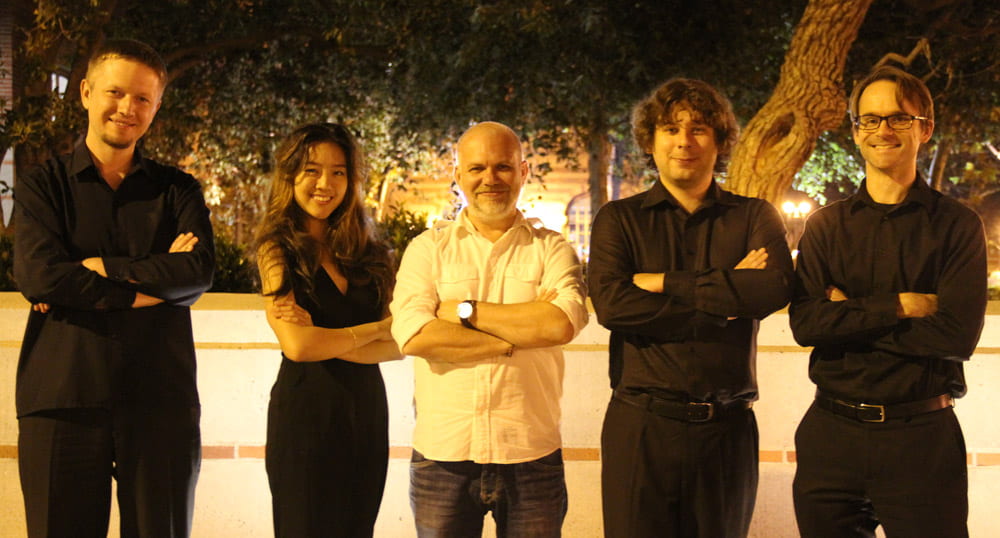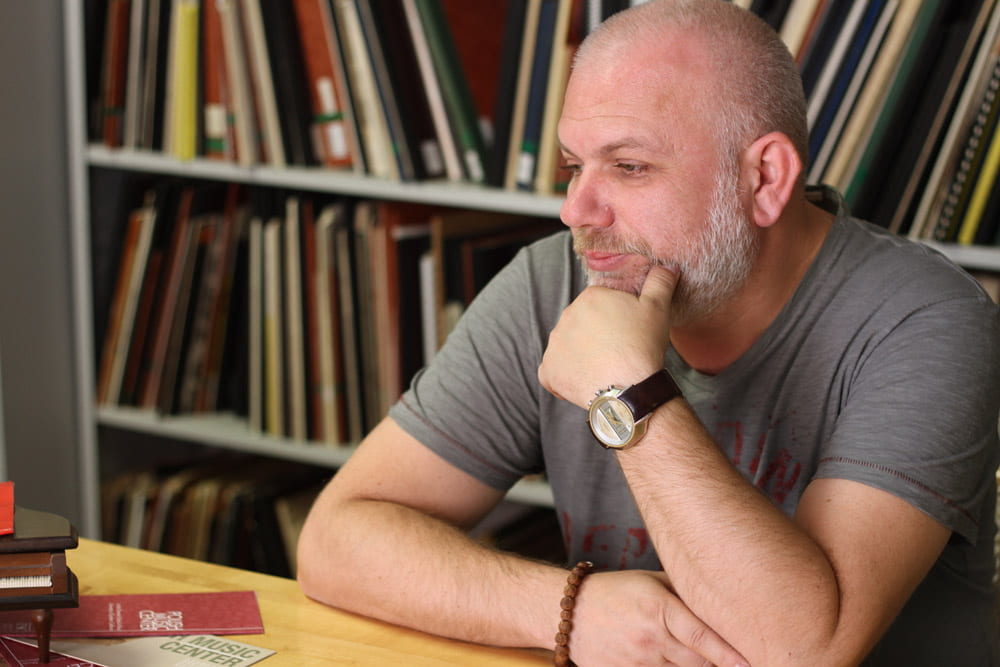By Marek Zebrowski
The Polish Music Center’s 2017 Paderewski Lecture-Recital featured music of Kraków based composer, Marcel Chyrzyński. A student of Marek Stachowski and Krzysztof Penderecki, Chyrzyński is a professor of composition at the Kraków Music Academy and since 2016 has served as President of the Kraków branch of the Polish Composers’ Union[ZKP].
The October 15 concert at USC’s Alfred Newman Recital Hall focused on Chyrzyński’s chamber music, beginning with his In C for clarinet, cello and piano. Dating from 1996, this work humorously refers to Terry Riley’s iconic 1964 work with the same title. Whereas Riley’s approach mixed aleatoric and minimalist techniques, Chyrzyński applied to his composition the rigors of formal design, paying a gentle homage to his famous predecessor whilst charting his own path and musical style.
Two of Chyrzyński’s solo works then followed, Quasi Kwazi 3 for solo clarinet (1998) and For MS… for solo cello (2001). The former is a long and virtuosic clarinet fantasy-cadenza, the latter a passionate and, at times, angry outburst that left the audience astounded at its concentrated power of expression.
Next came two different duets: clarinet and piano, and cello and piano. In spite of its menacing title, Dance of Death (2013) is an almost campy piece where clarinet and piano vie for the musically scariest formulae and have lots of fun in the process. Farewell for cello and piano, on the other hand, bravely reaches back to the romantic and almost tonal traditions. Inspired by a poem, Wakare [Farewell] by Nakano Shigeharu, the composer observed that, “the author raises universally important issues of love, fragility of our existence, suffering and loss,” adding, “I decided to write a composition that reflects the atmosphere of this quiet and very personal poetry.”

The program closed with two works for three performers—Betelgeuse for violin, cello and piano, and Death in Venice for clarinet, cello and piano. The 2014 Betelgeuse artfully evokes in music the interstellar spaces where planets and stars experience their infinite and violent life cycles shrouded by cosmic nebulae and cosmic dust. The 2017 Death in Venicereceived its world premiere at the October 15 concert and, as the title suggests, its inspiration was Thomas Mann’s unforgettable novella and Luchino Visconti’s iconic film. Echoes of Mahler’s Adagietto and Wagner’s Tristan resonated during Chyrzyński’s recent visit in Venice that included a stroll along Lido’s (now shuttered) Hotel des Bains and its empty beach. These emotions added up to a powerfully evocative work, which (in a way) is typical of the entire catalogue of Chyrzyński’s compositions. As his lecture that preceded the concert demonstrated, Chyrzyński’s creative process is quite detailed and deliberative. Elaborate chordal structures underpin all of his works and a wide range of techniques is used for one goal only: a work of music that is expressive and meaningful, well-constructed and yet spontaneous-sounding, and also performer and audience friendly. Clearly, Chyrzyński always writes from the heart—he is not afraid of minor or major keys on occasion, and of seemingly old-fashioned formal designs. They serve him and his music very well.

The recital part of the evening featured the Cracow Duo, Chyrzyński’s strong champions not only in Kraków (where they are his Music Academy colleagues), but all across the world, where they have performed Chyrzyński’s music on numerous occasions. Cellist Jan Kalinowski demonstrated his great technical range in Chyrzyński’s solo piece, For MS… and in Farewell, where his lyrical gifts strongly came to the fore. Pianist Marek Szlezer shone throughout the concert with his thoughtful, resourceful and expert in partnering for all of the duets and trios. Violinist Jiwon Sun, a Thornton graduate student who joined the Cracow Duo for Betelgeuse, demonstrated fine musicianship and command of her instrument aplenty. Thornton School of Music graduate and longtime PMC collaborator, clarinetist Andrew Leonard gave a spirited reading of Chyrzyński’s Dance of Death and In C, augmenting the effect with his reading of Quasi Kwazi 3 and providing appropriately lyrical bursts of passion in Death in Venice. The audience obviously enjoyed the evening, rising to recognize the composer and the performance at the end of their program.
